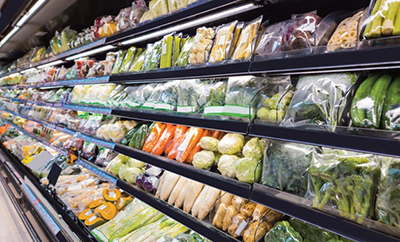(Source: S. Florida Times)
(StatePoint) – Plastics are no longer just an environmental issue — they are a direct threat to human health.
Found in homes, workplaces and schools, scientists are increasingly finding plastics inside our bodies. Microplastics and toxic chemicals have been detected in human blood, feces, lungs, breast milk, placentas, stomachs and even brains — and babies are exposed before they are even born. Nanoplastics are particularly concerning because they are small enough to enter individual cells and tissues, raising red flags about long-term health effects.
With the Plastic House Challenge, Greenpeace USA asks participants a series of questions about items in three rooms of their homes — kitchens, bathrooms and bedrooms — to identify hidden sources of plastic exposure in their daily life. The survey aims to raise awareness about the risks of plastic pollution while empowering consumers to demand accountability and action from corporations and government.
What the science shows
Plastics are made with over 16,000 chemicals, at least 26% of which are highly hazardous to human and environmental health. Many remain untested, and each major type of plastic can contain more than 400 chemicals of concern.
Advocates say that contrary to popular belief, recycling is not a safe solution to the problem of excessive production, as less than 5% is recycled, and the process can actually increase concentrations of toxic chemicals.
Health Impacts
Plastics release or contain substances linked to:
- Hormone disruption (endocrine disorders)
- Cancers
- Reproductive issues (infertility, premature birth, early puberty)
- Neurological disorders and learning disabilities
- Immune dysfunction and chronic inflammation
- Obesity, diabetes and metabolic disease
- Respiratory diseases
- Cardiovascular problems
- Digestion disorders
While all people are exposed, communities living near petrochemical and plastic production facilities — often lowincome and marginalized — bear a disproportionate burden.
Numerous studies show that residents of these “fenceline” communities face higher rates of premature birth, low birth weight, childhood cancers, respiratory and heart disease, mental health disorders and other chronic illnesses.
Pathways of exposure
Humans encounter plastic chemicals and particles daily through three main routes:
- Ingestion. Packaging leaches chemicals into food and beverages. Over 12,200 chemicals are used in food-contact materials; at least 600 are toxic, while another 3,500 lack public toxicity data. Migration of chemicals into food is so common that U.S. law defines them as “indirect food additives.” Microplastics also absorb other environmental toxins – such as heavy metals, polychlorinated biphenyls and pesticides from the environment – which people ingest along with the plastic particles themselves.
- Inhalation. Microplastics are released into household air from carpets, clothing, bedding, toys, packaging films and dust. Indoor air can contain 60 times more microplastics than outdoor air and people spend up to 90% of their lives indoors. Families are estimated to inhale 2,000–7,000 microplastics daily, and a person may inhale the equivalent of the Eiffel Tower in plastic over a lifetime.
- Skin absorption. Personal care products, cosmetics and fragrances often contain or are packaged in plastics with hazardous chemicals such as phthalates, PFAS and parabens. These are absorbed directly through the skin. Regulatory Gaps
Despite the scale of human exposure, Greenpeace USA policy analysts say that transparency is lacking; 25% of plastic chemicals lack public identity data, 50% lack information on their function, 56% lack data on their presence in plastics, and 66% lack hazard information. With just 6% of plastic chemicals regulated internationally and U.S. food packaging regulations covering only a fraction of chemicals in use, the public is left largely unprotected.
Protecting ecosystems and human health from plastic goes beyond personal choices. According to advocates, it will require a global effort to reduce plastic production at the source, eliminate toxic plastic chemicals and expand safer, reusable alternatives.
Learn more by visiting greenpeace.org/usa/plastic-house-challenge/.
